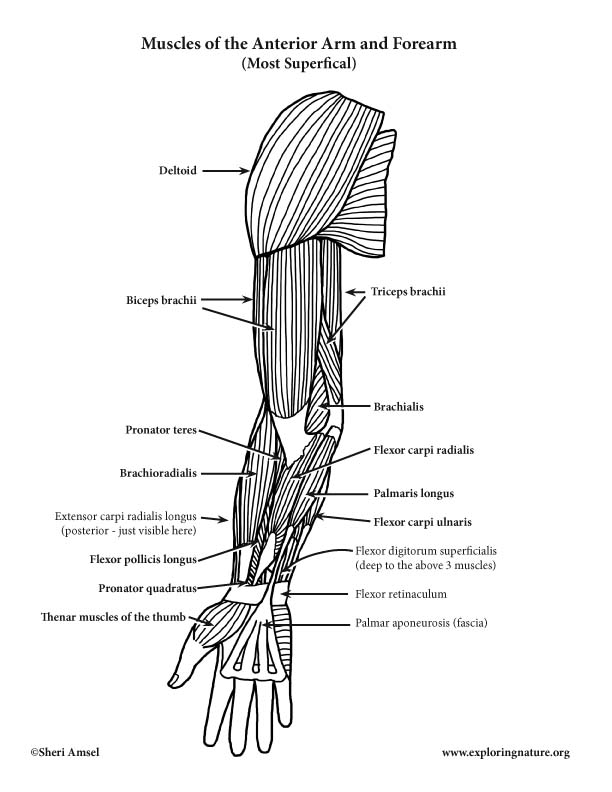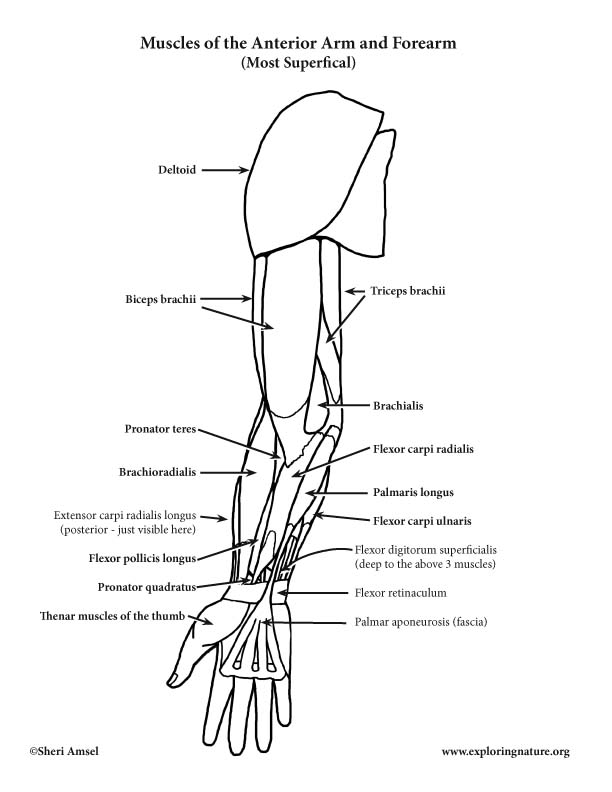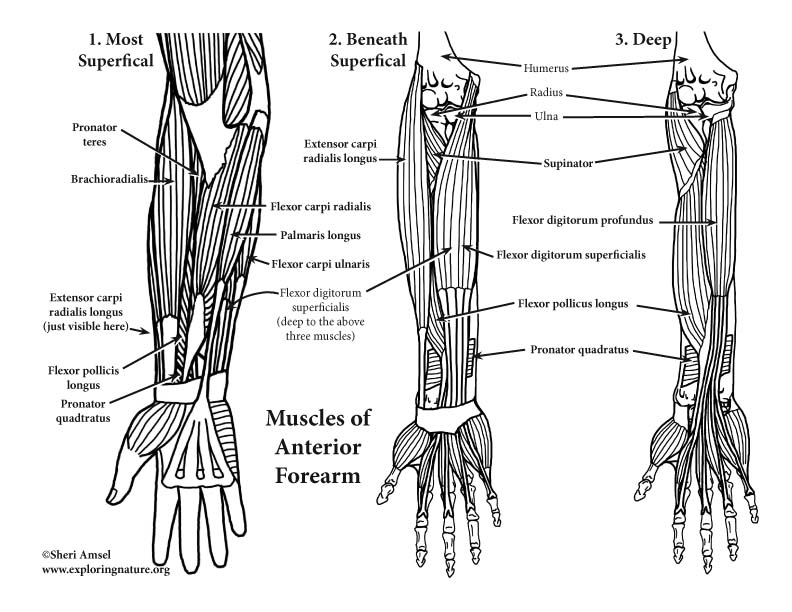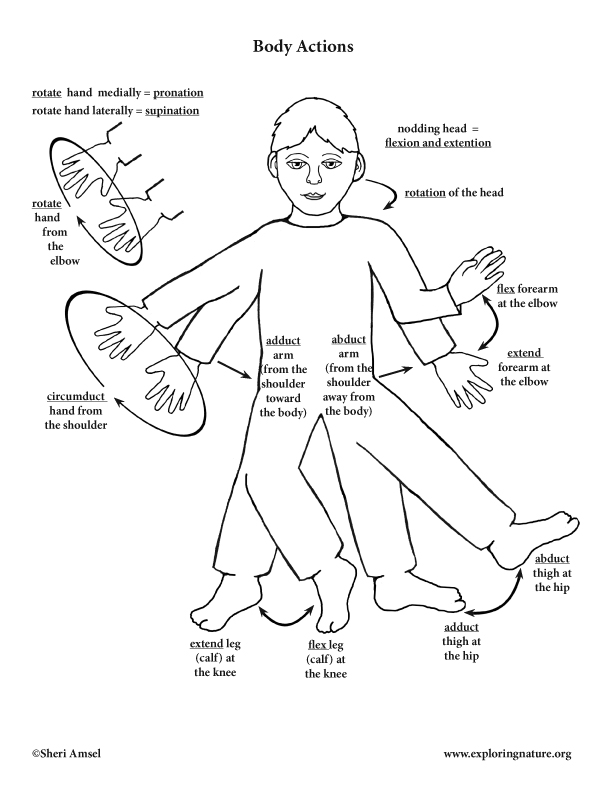

Muscles that Cross the Elbow (Moving the Forearm) (Anterior)
1) Deltoid (Visible, but not part of this group as it moves arm from the shoulder)
2) Biceps brachii
a. Actions: flexes and supinates forearm (supinate rotates forearm laterally) –
these act together for pulling tissue from tissue box, also a minor arm flexor
b. Innervation: Musculocutaneous nerve
c. Origin: from coracoid process and supraglenoid tubercle on scapula
d. Insertion: through intertubercular groove of humerus to insert on
radial tuberosity
3) Triceps brachii (Visible, but posterior)
4) Brachialis
a. Actions: flexes forearm
b. Innervation: Musculocutaneous nerve
c. Origin: from anterior distal humerus
d. Insertion: to coronoid process of the ulna
5) Brachioradialis
a. Actions: flexes forearm (though doesn’t initiate flexion)
b. Innervation: Radial nerve
c. Origin: from distal humerus
d. Insertion: to styloid process of the radius
Muscles of the Forearm (Moving Wrist, Hand and Fingers)
(Anterior Compartment – Flexors)
l. Superficial Muscles
6) Pronator teres
a. Actions: pronates (medial rotates) forearm, weak flexor of the forearm
b. Innervation: Median nerve
c. Origin: from medial epicondyle of the humerus and coronoid process of ulna
d. Insertion: to the lateral shaft of the radius
7) Flexor carpi radialis
a. Actions: flexes wrist, abducts hand, week flexor at elbow
b. Innervation: Median nerve
c. Origin: from medial epicondyle of the humerus
d. Insertion: to the base of 2nd and 3rd metacarpals (wrist pulse area)
8) Palmaris longus
a. Actions: weak wrist flexor
b. Innervation: Median Nerve
c. Origin: from medial epicondyle of the humerus
d. Insertion: to the palmar aponeurosis
9) Flexor carpi ulnaris
a. Actions: flexes wrist, adducts hand
b. Innervation: Ulnar nerve
c. Origin: from medial epicondyle of humerus and
olecranon process of ulna
d. Insertion: to the base of the 5th metacarpal and
pisiform bone (carpal).
10) Flexor digitorum superficialis
a. Actions: flexes wrist, flexes middle phalanges of fingers 2-5
(important finger flexor for fast flexion against resistance)
b. Innervation: Medial nerve
c. Origin: from medial epicondyle of the humerus, coronoid
process of ulna, and shaft or radius
d. Insertion: to the four tendons into the middle phalanges
of fingers 2-5.
ll. Deep Muscles
11) Flexor pollicus longus
a. Actions: flexes distal phalanx of thumb, weak wrist flexor
b. Innervation: Median nerve
c. Origin: from anterior radius
d. Insertion: to distal phalanx of thumb
12) Flexor digitorum profundus
a. Actions: flexes fingers, weak wrist flexor, flexes distal interphalangeal joint
b. Innervation: Median nerve does lateral half,
Ulnar nerve does medial half of muscle
c. Origin: from anterior medial surface of ulna
d. Insertion: into four tendons of distal phalanges of fingers 2-5
13) Pronator Quadratus
a. Actions: pronates forearm (with pronator teres),
holds radius and ulna together
b. Innervation: Median nerve
c. Origin: from anterior distal ulna
d. Insertion: to distal anterior radius
Not muscles:
14) Flexor retinaculum: (also called the transverse carpal
ligament and forms the carpal tunnel)
15) Palmar aponeurosis: (fascia that lies over the tendons of hand)
_____________________________________________________________________________________________________________________________________
Use this study tool to learn the Muscles of the Anterior Arm and Forearm: Color the Muscles of the Arm and Forearm (Anterior)
Assess your knowlege of the Muscles of the Anterior Arm and Forearm: Label the Muscles of the Arm and Forearm (Anterior)
________________________________________________________________________________________________________



